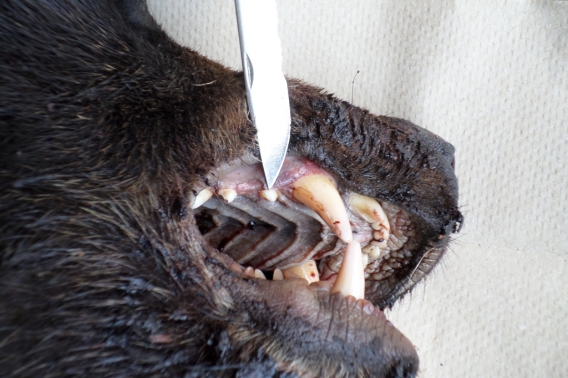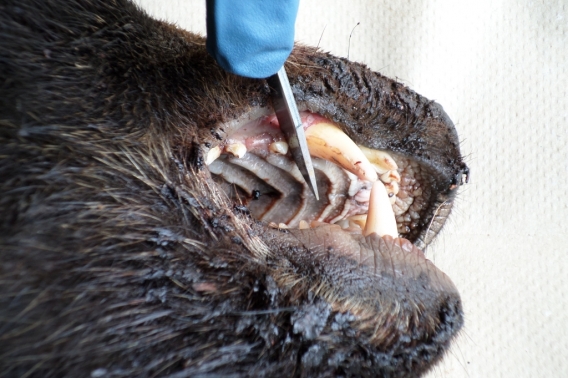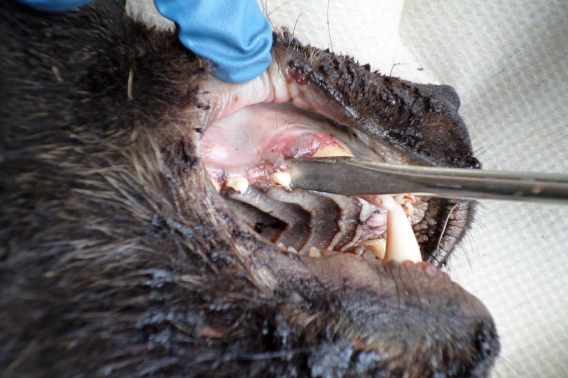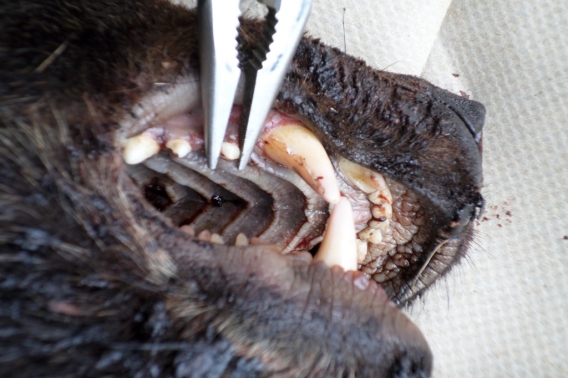Instructions for Bear Tooth Removal
The collection of teeth from hunter-harvested bears is a critical component of Wisconsin's bear management program. These teeth allow biologists to determine the population's age structure, the age when females first reproduce and consecutive cub production. Hunters are critical in the department's ability to scientifically manage Wisconsin's bears. Your cooperation is appreciated. Thank you.
In-person registration stations will not collect or submit a tooth on behalf of hunters. It is each hunter's responsibility to submit a tooth to the department. It is not optional.
Step 1. Locate the first upper premolar, and the first tooth behind the upper canine.
Location of first upper-premolar (Photo courtesy of Nate Libal)
Step 2. Use a knife to cut the gum tissue around both sides of the tooth. Cut as deeply as possible
into the tissue to ensure the root can be removed without breaking.
Cut the gum tissue on both sides of the tooth (Photo courtesy of Nate Libal)
Step 3. Use a small screwdriver to gently loosen the tooth.
Loosen tooth with a flat-head screwdriver (Photo courtesy of Nate Libal)
Step 4. Remove the loosened tooth with pliers. If it cannot be easily removed, use a screwdriver or
pliers to loosen the tooth further.
Remove loosened tooth using pliers (Photo courtesy of Nate Libal)
Step 5. Examine the removed tooth to ensure the root is intact. If the root is not intact or you are not sure,
remove the other upper-premolar.
Inspect tooth to ensure root is intact (Photo courtesy of Nate Libal)
The root of the tooth is sectioned and stained. Once stained, the tooth can be examined for growth rings, which deposit annually in a manner similar to growth rings on a tree. Furthermore, due to the nutritional stress associated with raising a litter examining female teeth for rings that are close together is an indicator of past reproduction.
Annual growth of a tooth.






